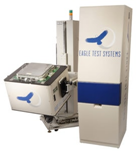Congress and President make a big commitment supporting US-based Chip Manufacturing
Until recently, the semiconductor industry has had little visibility with the public in America and the federal government when compared to the focus things like the oil and gas, automobile and pharmaceutical industries receive. Of course, most everyone in America buys gas or a car or may need medicine at one time or another, but few buy semiconductors directly as a consumer. Semiconductors in essence are “under the hood” of many products we buy like computers, phones, appliances, cars, etc. Thus, a bit invisible to the consumer in general.
This is beginning to change in a big way due to the passing by Congress and the Biden administration of the CHIPS and Science Act recently to put incentives in place for more semiconductor manufacturing coming back to the US. This is being driven by several factors such as:
• National defense
• Supply chain stability
• China geopolitical concerns
See https://spectrum.ieee.org/chips-act-of-2022 for more information on CHIPS Act.
America is realizing how critical this technology is to our national defense and our economy. Just the idea of the CHIPS act, before it was passed, has seen the industry announce many new billions of dollar investments to build more semiconductor fabrication factories (FABs) in the US. This includes TSMC in Arizona, Texas Instruments and Samsung in Texas, Intel in Ohio and some others. Having more FABs is a great first step, but the supply chain for semiconductors is very complex and much more than just the FABs. For this blog I am just going to focus on one of those areas, semiconductor test.
Semiconductor Test is Ripe for Onshoring
Much of semiconductor assembly and test is done outside the US. So, this is a ripe area to onshore, but as with manufacturing it needs to be done in a cost-effective way. This includes adopting new technologies to help reduce chip test costs and investments in training at our universities working with industry to develop a new generation of IC test engineers. Two key initiatives, one in technology and one in a university, I’ll highlight as encouraging examples of a start on the US journey to control the chip supply chain within its borders for the reasons previously highlighted.
One of the technologies that is showing promise is an IEEE standard, 1687, also known as IJTAG. This standard defines a network architecture within a chip with something called a SIB (Segment Interconnect Bit), which in essence acts like a door that can be opened or closed to access an instrument to perform some test function (e.g. run a memory built-in self-test, voltage monitoring, etc.) as needed. The beauty of silicon technology, that is the fundamental enabling technology for chips, is it is very low cost and the industry over the years continues to drive down the cost per functional capability or chip. It truly is an amazing accomplishment and due to this positive cost strategy, adding more test capability, so in essence a chip can help test itself, can be done almost for free! To bring this embedded test technology alive drives the need for lower-cost IJTAG development tools and features added to current tools and testers. For more information on IJTAG click this link https://www.asset-intertech.com/resources/blog/category/ijtag/
The CHIPS Act as a byproduct will create a fantastic opportunity for high-paying semiconductor test, design-for-test and validation engineering jobs for America. These are engineers, like the semiconductor industry, who are not visible to the public like doctors, lawyers or civil engineers. But these engineers are the key bridge between design and manufacturing. A design can be great, but can it be tested? Can it be manufactured with high yield (lots of good chips, few bad ones)? etc. These engineers are key to making the design come to life as a product that can be sold for a profit.
At Texas A&M, they have a class on Semiconductor Test and an experienced former industry test engineer as the professor. Since my daughter during her time at Texas A&M took the class, I have a bit of insight on the course. They have an actual tester that was donated by a semiconductor supplier to help enable real-world learning. Chip testers are not cheap costing hundreds of thousands of dollars, so for a university to get one means a lot. Thus, the course not only teaches theory like any good engineering course would but has lots of hands-on projects to help the student learn how to develop a semiconductor test program.
 Teradyne Eagle CHIP Tester for analog and mixed-signal chips
Teradyne Eagle CHIP Tester for analog and mixed-signal chips
So, these are two encouraging examples of what the future holds for semiconductor test engineering in the US. This is going to be an exciting career direction for many engineers. What could be more exciting than working on leading edge technology and making it come to life. Reminds me of the movie “Night at the Museum” where history comes alive. Now a new generation of engineers in the US get to make the future come alive! How cool is that, and the CHIP Act investment incentives will help this become a reality.



